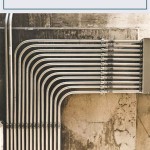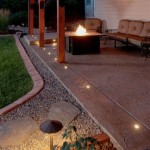Essential Aspects of Indoor and Outdoor Lighting Schemes
Lighting plays a crucial role in creating a comfortable and inviting atmosphere within any space. Whether it's illuminating your home's interior or enhancing the ambiance of your outdoor area, understanding the fundamental aspects of indoor and outdoor lighting schemes is key to achieving desired results.
Purpose and Functionality
Before embarking on a lighting plan, consider the intended purpose of the space. For instance, a well-lit kitchen requires sufficient task lighting for meal preparation, while a cozy living room benefits from ambient lighting for relaxation. Similarly, outdoor lighting should provide practical illumination for safety and functionality, while accentuating architectural features and landscaping.
Types of Lighting
There are various types of lighting fixtures available, each serving a specific function. Ambient lighting provides general illumination throughout a space, while task lighting focuses on specific areas for activities like reading or cooking. Accent lighting highlights architectural details or focal points, creating visual interest. Decorative lighting adds aesthetic value, enhancing the ambiance without necessarily providing significant illumination.
Natural vs. Artificial Lighting
Natural lighting, harnessing sunlight, is the most efficient and cost-effective source of illumination. However, it can be unreliable and inconsistent in many environments. Artificial lighting, provided by electrical fixtures, offers greater control over brightness, color temperature, and directionality. Combining both sources can optimize lighting conditions, reducing energy consumption and creating a balanced and natural-looking environment.
Color Temperature and Intensity
Color temperature refers to the perceived warmth or coolness of light. Warm light, with a lower color temperature (2700-3000K), creates a cozy and inviting atmosphere, while cool light (4000-6500K) enhances alertness and concentration. Intensity, measured in lumens, determines the brightness of a light source. Proper balance of color temperature and intensity is essential for achieving the desired ambiance and functionality.
Placement and Directionality
Strategic placement of light fixtures is crucial for effective lighting. Recessed lights provide even illumination without creating glare, while pendants and chandeliers add visual interest and focus lighting. Directional lighting, such as spotlights and floodlights, can highlight specific areas or objects. Consider the directionality of light to avoid harsh shadows and create a comfortable and visually appealing environment.
Conclusion
Understanding the essential aspects of indoor and outdoor lighting schemes empowers you to create spaces that are both functional and aesthetically pleasing. By carefully considering the purpose, types of lighting, natural and artificial sources, color temperature, intensity, and placement, you can achieve optimal lighting conditions that enhance the ambiance, improve functionality, and ultimately elevate the overall experience of any space.

19 Stylish Outdoor Lighting Ideas The Best Patio

Lighting For An Outdoor Living Space Flip The Switch

Landscape Garden Lighting Design The Basics Studio N Supply

The Paths To Enlightenment Lighting Design For Landscape Architecture

The Brightest Trends In Outdoor Lighting

Landscape Lighting Design Principles Portal

Backyard Lighting Ideas 15 Ways To Illuminate Beautifully

The Brightest Trends In Outdoor Lighting

Create A Landscape Lighting Design In 3 Easy Steps Super Bright Leds

Exterior Lights Lamps For Terrace Lighting At Light11 Eu
Related Posts







